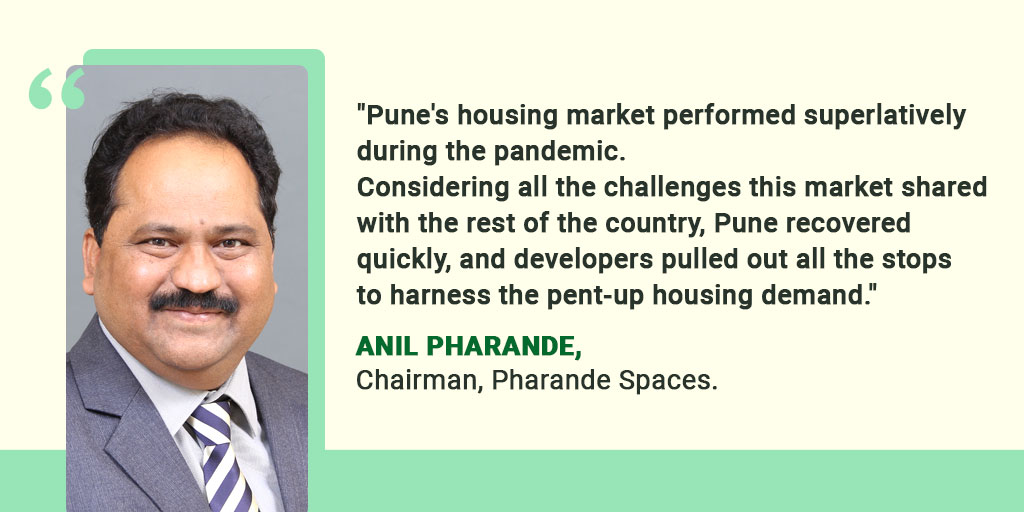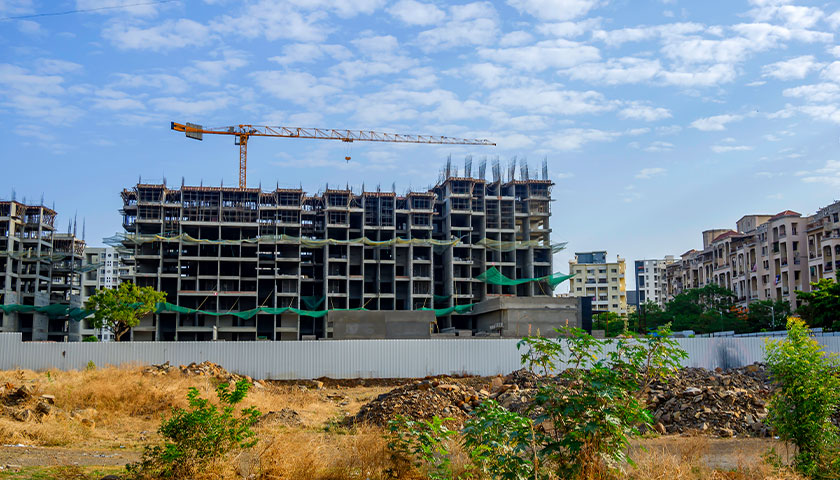“Pune’s housing market performed superlatively during the pandemic. Considering all the challenges this market shared with the rest of the country, Pune recovered quickly, and developers pulled out all the stops to harness the pent-up housing demand,” said Anil Pharande, Chairman, Pharande Spaces.
In an exclusive interview with RoofandFloor, he spoke about the second wave’s impact on real estate, emerging trends, their ongoing projects, and much more. Here are the excerpts.
Elaborate on the impact of the second wave of the pandemic on real estate. How was it different from that in 2020?
The second wave was detrimental for Pune’s real estate sector. While there was a lot of latent demand, developers were challenged by a lack of sufficient manpower and major disruptions in the construction materials pipeline.
Nevertheless, the second wave was not as bad for the sector as the previous one. During the first wave, all activity including site visits and construction, had come to a complete halt. On the other hand, the stamp duty cut, which more or less saved the day during the initial part of the pandemic, was no longer available. This has proved to be a huge challenge for developers who want to address the demand with attractive pricing but are instead saddled with hugely increased input costs.
How has the residential sector responded to the disruptions this year?
It depends on which perspective one wants to look at it from. On the one hand, the economy took a big hit and there continued to be job losses. On the other hand, housing demand came back massively as people discovered that a self-owned home is the only performing asset to have in such times.
What are some key trends that we can expect in Pune’s residential market?

Pune’s housing sector performed superlatively during the pandemic. Considering all the challenges this market shared with the rest of the country, Pune recovered quickly, and developers pulled out all the stops to harness the pent-up housing demand. Regardless of other circumstances, Pune always presents a favourable counterpoint to its immediate neighbour Mumbai, where homes are unaffordable for many. As such, this city always has an advantage – and it attracts a lot of investor demand even from Mumbai.
According to our research, there is a good demand for 1BHKs in Pune. What are the reasons for this increased demand? Is there enough supply in the city?
Currently, we are witnessing high demand for bigger homes as people want to accommodate the work-from-home and study-from-home dynamics. However, it is also true that for a significant part of the population, a roomy 1 BHK is an improvement over their previous accommodations.
Yes, there is a lot of supply of smaller configurations – particularly because they are not selling as well as 2 and 3 BHKs. The target clientele for budget homes was most severely hit by the pandemic via job losses and crippling salary cuts.
In Pune, which BHK segment is stealing the show currently?
As per our observations, 2, 2.5, and 3 BHK homes are currently the showstoppers. Buyers of such homes have recovered more quickly from the pandemic and were not as severely affected as budget homebuyers in the first place. People are now looking for final homes, not starter homes. They are playing for keeps.
What is your project pipeline?
Pharande Spaces have stamped their signature green imprints across several hundred acres of Pimpri-Chinchwad, from Moshi in the North-East to Ravet in the West, and several sectors of Pradhikaran. Our ongoing projects include Vaarivana, Felicity, Puneville, Kairosa, L-Axis and Woodsville.
Do you think this is the right time for homebuyers to take the plunge?
I would go a step further and say that fence-sitters are running out of time.
Property prices in Pune are likely to increase soon because of hugely increased input costs and massive ongoing demand. The current deals will, in all likelihood, not be available next year.
Buyers should take advantage of the ongoing and upcoming festive season discounts and offers and secure their homes as soon as possible.

